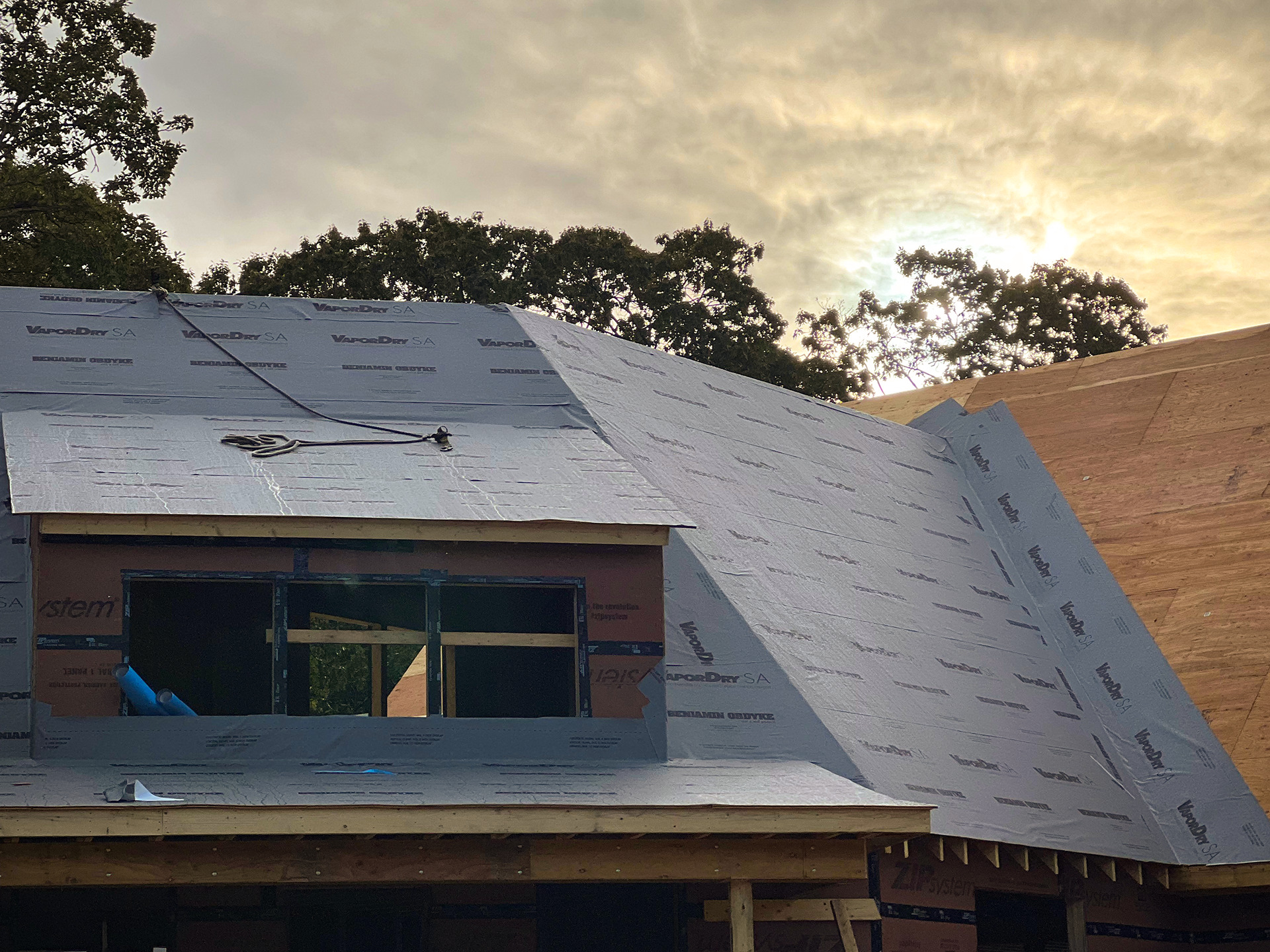The roof is not only one of the largest elements of a home, but also one of the most vital to protect occupants, contents, and the house’s overall integrity. That’s why it’s critical to not only carefully consider what material the roof is made of but what products and systems are working under it to provide protection and ensure proper movement of air and moisture. Roofing systems that don’t properly manage air and water can experience rot, decay, and premature failure.
No matter the material, protecting the roof investment comes down to understanding the different layers of the entire roof assembly, from the shingles to the attic insulation. Consider these underlayment strategies to protect the longevity of a wood, metal, or asphalt roof.
How to Better Protect Cedar Roofs
A durable cedar roof starts with well-manufactured cedar. It’s tempting to seek out the cheapest alternatives, but buying off-grade cedar can lead to rapid deterioration. “Ensure your cedar shakes and shingles meet grading rule requirements, as required by building codes,” notes the Cedar Shake & Shingle Bureau. The organization recommends seeking products carrying its Certi-label, which have undergone third-party inspections, and ensure each bundle is clearly marked with appropriate product grading information. (Visit their website for details.)
From there, make sure you’re specifying systems that don’t contribute to early failure. Cedar shingles need an air space underneath to ensure trapped moisture can move and escape; cedar that is installed directly to the ice and water shield is likely to trap moisture, particularly on the underside, leading to cupping and warping. By keeping cedar shingles off the underlayment and creating an air space, you can dramatically reduce the moisture underneath and help ensure the moisture content of the shingle is the same on the back side as it is on the face.
The ideal system underneath a cedar shingle roof combines VaporDry SA roofing membrane with Cedar Breather roof ventilation mat over top. VaporDry SA is one of the few self-adhered, vapor-permeable roofing membranes, allowing moisture from the attic to migrate, increasing drying potential of the roof deck. Then, Cedar Breather’s 3D design provides an airflow space between the membrane and the wood shingles, allowing for drainage and drying, made most effective when using a ridge vent such as Rapid Ridge 7. Cedar Breather also eliminates the need for furring strips.
How to Better Protect Metal Roofs
Metal is another material that carries a more premium price tag, but provides sought-after longevity, a modern style, and, in many cases, energy efficiency benefits.
Metal roof panels are impermeable, so water vapor will not move through them. This creates a concern about condensation building up on the underside of the metal. Combine this with the outside air against a cold roof and, over time, corrosion may develop. Just like cedar, metal roofs need to be ventilated underneath to ensure proper airflow and drying.
As a best-case approach, the roofing system below the metal roof will include spray foam insulation in the rafters, VaporDry SA roofing membrane on top of the sheathing, and then Cedar Breather. When combined with a ridge vent, this design will create convective airflow to help reduce the risk of high moisture concentration. The metal roofing can be installed directly to the VaporDry SA membrane, but including Cedar Breather will allow for optimal drying.
Along with more drying potential, Cedar Breather decouples the metal from the roof sheathing, helping to reduce noise transfer from rain and hail. Cedar Breather also can help address oil canning—in which the standing seam metal begins to wave or ripple over long spans of uneven roof framing—by creating a cushion and leveling out imperfections in the roof.
When installing a Cedar Breather system under metal roofing, ensure that the roofing fasteners you use can accommodate the added thickness of the Cedar Breather.
How to Better Protect Asphalt Roofs
Asphalt shingles don’t benefit from airflow as much as wood and metal, so they are often installed directly to the underlayment, with ice and water shield used at the eaves and valleys. The 100% continuous acrylic adhesive of VaporDry SA is the ideal option for this application: It offers higher performance than asphalt adhesives, which are greatly affected by temperature but at less weight and thickness, and provides sealing around fasteners to create a full air control layer. VaporDry SA also can provide temporary protection in case of shingle blowoff or damage. Also keep in mind that ice and water shield should only be used at eaves and valleys, so it’s typically paired with felt paper; VaporDry can be used across the entire roof, thereby eliminating the need for multiple products while also providing greater resistance to tearing during installation.
Learn more about VaporDry SA and Cedar Breather or find your local supplier.

